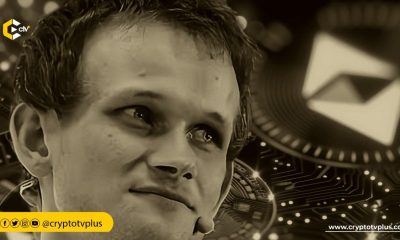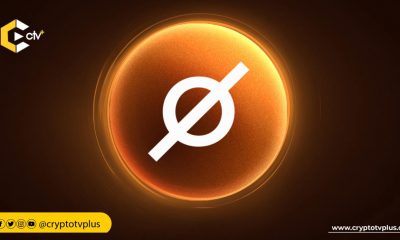FEATURED
Vitalik Buterin warns: Ethereum’s rising risks threaten its strength

The Ethereum blockchain’s nature has made it a hub for thousands of decentralized applications in the Web3 industry. Data reveal that, as of the second week of May 2021, the amount of locked Ethereum stood at 19,375,242 ETH, which is approximately $34.8 billion at a $1,800 rate.
In an article written by Vitalik Buterin, the co-founder and creator of Ethereum, he explicitly stated that there are various uses or applications of the Ethereum blockchain which bear huge risks for the entire ecosystem.
Proposals on the Ethereum blockchain
He pointed out that proposals like the Ultimate Oracle, which allows users to “vote on what facts are true by sending ETH, with a SchellingCoin mechanism”; Re-staking, where users can stake their ETH while simultaneously depositing it in another protocol, as seen in EigenLayer; and L1-driven recovery of L2 projects, where an L1 can help recover an L2 project through a fork, are promising but require careful implementation.
“These proposals are generally made in a well-intentioned way, and so the goal is not to focus on individuals or projects,” he said. The aim is to address the techniques by which these proposals are implemented.
He advised projects that are trying to implement the “dual-use of validator staked ETH” should not act irresponsibly by trying to use the social consensus of Ethereum with a focus on their product only.
Citing examples of low-risk and high-risk development on Ethereum, he pointed out that project teams can utilize a pathway that doesn’t necessitate the involvement of the broader Ethereum ecosystem when they need to make corrections in their project.
“If you have the intent to rope in the broader Ethereum ecosystem’s social consensus to fork or reorg to solve your problems, this is high-risk, and I argue that we should strongly resist all attempts to create such expectations,” he added.
The effect on the global space
Vitalik warned that if his observations are not taken into consideration by teams who use the Ethereum blockchain, the Web3 community might create a system that destroys decentralization and opens the door to political players and external forces.
A common scenario, as he mentioned, involves the network potentially splitting into two distinct segments operating under different rules, with no chance of reunification.
This could also lead to additional consequences, such as introducing skewed pricing into one section of the divided chain through a compromised oracle controlled by validators with greater influence over the chain.
He observed this impact as a potential global scenario since numerous utilities, particularly financial ones, are being developed today for various nationalities worldwide using Ethereum as their fundamental infrastructure.
Consequently, “instead of being just a neutral technical platform, it becomes much more explicitly a financial tool,” he said.
What can we do?
Vitalik noted that there are five basic ways to tackle these challenges using a case-by-case model: price oracles, truth oracles, layer 2 protocols, cross-chain bridges, and using the Ethereum validator set to secure other chains.
He noted that developers can use Price Oracles “that can count on a trust assumption that voting participants get corrupted slowly,” instead of using Oracles that rely on “appealing to L1 consensus for recovery” when there is a problem.
The second recommendation he gave is that a more complex truth oracle, which reports on facts more subjective than price and is designed like “a decentralized court system built on a not-quite-crypto economic DAO,” can suffice.
In the use of Layer 2 protocols, he noted that they can be designed to depend on partial training wheels in the short term; multiple proving systems in the medium term; and fully incorporate “complex functionalities such as EVM validation” into the protocol in the long term.
Vitalik said that when using cross-chain bridges, protocols should be designed to minimize reliance on them. Instead, “hold assets on the chain where they originate and use atomic swap protocols to move value between different chains.”
The last point he mentioned is using the Ethereum validator set to secure other chains. He said that this process will entail preventing the attempt to manage “an independent chain entirely,” while becoming “a validium with proofs anchored into Ethereum.”
The effect is that the protection against finality-reversion attacks of the chain mimics that of Ethereum, making the chain more secure “against censorship up to 99% attacks (as opposed to 49%).”
Final words
At the conclusion of his writing, the blockchain advocate said that because “blockchain communities’ social consensus is fragile,” it should not be overburdened. Projects being launched on Ethereum should be designed not to increase “the scope of blockchain consensus beyond verifying the core Ethereum protocol rules.”
He noted that the Web3 community should instead focus on preserving the chain’s minimalism, supporting uses of re-staking that do not look like slippery slopes, and helping developers find alternate strategies to achieve their security goals.
Read also;
























